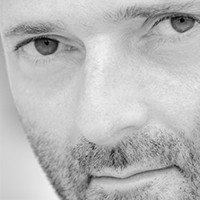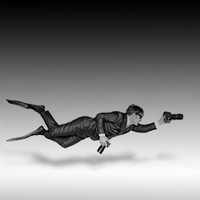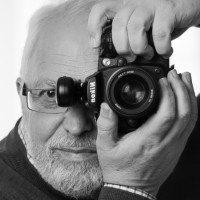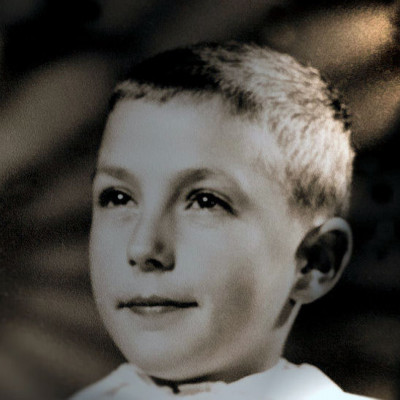SEARCH






|
|
|
|


by Editor Miro Susta
There are many rules that we should consider for photo design, but very often we don’t! The use of negative space for example. Let's talk about why the negative space is actually positive in many cases.
What is negative space in a photo?
It is the "empty" space in an image, it ensures that the viewer's gaze is immediately directed to the central object in the photo.
We could say that the negative space play the second violin in the photo orchestra – this means that it serves to make the central object stand out, or in other words to support the positive space.
If somebody feel that negative space is less important, then he/she is mistaken.
Negative space is often more important than the main subject in the photo, because it helps to create the atmosphere, determines the splendor of the image and underlines the mood of positive space.
The negative space does not have to be an empty area.
Actually a negative space in the image occurs when the photo subjects almost blend into the background, however, the image is able to clearly highlight the main motive by restraining itself as the base.
The objects in the negative space in the following photos are present, but they don’t draw viewer’s attention at first glance. Instead, they first push the eyes into the area of positive space (usually the eyes then wander through the details in the negative space).
A large empty room or large areas can be very special in this way. However, it is not easy to put this skillfully in scene because the negative space is capable of drastically changing the mood in the photo and the story that we are trying to communicate to people. Following some very good examples.
Negative space directs the view to the main theme, it provides a natural balance against the positive space in the image scene.
Finding the right balance is not easy, it takes time and requires a lot of practice.
Very important is to experiment with different compositions to see how they affect the feel of the photo.
I’ve included some examples of the main subject combined with motion blur in the background.
The main success key for creation of superb negative space is to ignore the main object and focus on its surroundings.
In this way negative space can be created naturally and/or artificially.
As an example, let's view the following images below.
However we must be cautious with use of negative space (NS) and the amount of "emptiness" and respect a certain balance.
Usually the positive space (PS) shall not take more than 30% of the image, 40% is a reasonable limit.
The following two photos, with larger (10% PS/90% NS) and smaller negative (40% PS/60% NS) space, show well balanced & good examples of using negative space in wildlife and architectural photography.
Following some nice image examples of successful positive and negative space applications in photography, where there is no doubt about what is what! Both are separated by excellent contrasts.
This article has illustrated what the negative space can do. With its help you can photograph light, aerate or enhance feelings and emotions – express sadness, loneliness or joy and happiness.
The ultimate feelings that will spring from the photo are brought to you by careful consideration of negative space in which there is a tremendous potential - just waiting for you to grasp and shape it.
Try it, practice makes perfect!
 | Write |
 | Christos Zoumides Very well written article with great examples! Thanks for sharing! |
 | Miro Susta CREW Many thanks for your kind words Christos, we appreciate it very much. |
 | Peter Svoboda MQEP CREW Great article. Many thanks Miro and Yvette! |
 | Miro Susta CREW You are most welcome Peter. Thank you for your appreciation. |
 | Nuno Borges Thank you Miro and Yvette! |
 | Miro Susta CREW You are most welcome Nuno. |
 | Mike Kreiten CREW Thank you, Miro! I like your choice of good examples, covering so many genres. Outstanding work! |
 | Miro Susta CREW Many thanks for your appreciation Mike. |
 | Alessandro Traverso PRO Admiring images of many talented photographers, I noticed that this concept is often put into practice with great results and with mixed results sometimes I try it too :)))
Interesting article, congratulations Miro and Yvette. |
 | Miro Susta CREW Thank you for nice comment Alessandro. Have a nice weekend. |
 | David H Yang Thank you Miro and Yvette! |
 | Miro Susta CREW You are most welcome David. |
 | John Fan CREW Thanks, Miro and Yvette! |
 | Miro Susta CREW You are most welcome John. |
 | Luc Vangindertael (laGrange) CREW Thank you Miro and Yvette for this instructive article :-) |
 | Miro Susta CREW Many thanks for your appreciation Luc. |
 | Massimo Della Latta Complimenti, splendide fotografie. |
 | Miro Susta CREW Eres muy bienvenido Massimo. Me alegra ver que te gusta. |
 | Rolf Endermann PRO Many thanks at Mira and Yvette |
 | Steven Nossiter Very worthwhile article and a nice collection of images. BUT. Unless we assume that everyone reading this is fairly well versed in composition, it should also include a word of caution against over use... As a photo instructor for may years I often saw people try to add significance to a subject by isolating it, with weak results. It takes a well developed eye to make good use of negative space in composition. One good test is to look at an image both ways; i.e. look at a cropped version and see whether the extra space adds or detracts from the image.
|
 | Miro Susta CREW Steven, many thanks for your valuable comments. I appreciate it very much and agree with you. You are right, picture composition is every important. I tried to include the major subjects with image examples related to "empty space", now it is up to photographers how to handle it. |
 | Miro Susta CREW Steven I have actually introduced the "EMPTY SPACE" in the article 2nd sentence:
**What is negative space in a photo? It is the "empty" space in an image**. |
 | Miro Susta CREW Sorry Steven, I placed the above comment in wrong place, it was for Vladimir Asriyan. Have a very nice weekend. |
 | Eduardo Blanco García PRO Very interesting documentation, both graphic and photographic. Many thanks, Miro e Ivette for this extraordinary content. |
 | Miro Susta CREW Many thanks for your appreciation Mario Eduardo. |
 | Vladimir Asriyan So good article !!
Some time ago I had a small argument about the use of free space in the composition.
I am very pleased that this article and the selected photos are fully consistent with my understanding of this topic. Only a phrase negative place I would replace the free space, which should be filled or not, depending on the plot and composition.
Thanks Miro. Thanks Yvette. |
 | Miro Susta CREW Vladimir, many thanks for your comments. I am glad to see your appreciation. How to call this "space"? You are right, we could call it "free space" or even "empty space", but in the photography we using "positive" and "negative" space designation. You can hardly find "empty" or "free" space designation in professional photo books. |
 | Miro Susta CREW Vladimir I have actually introduced the "EMPTY SPACE" in the article 2nd sentence: **What is negative space in a photo? It is the "empty" space in an image**. |
 | Vladimir Asriyan Yes, I saw it. The point is in my personal attitude to the word negative. I perceive it as a word born in film photography, or as something bad.
And in the photo there can be nothing bad. Maybe only the picture itself as a whole :-)
Thanks again, dear Miro. |
 | Thierry Dufour PRO Splendid images, superb article. Thank very much Yvette and Miro to have selected my images. |
 | Miro Susta CREW You are most welcome Thierry. I am glad to see that you like it. |